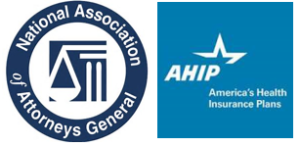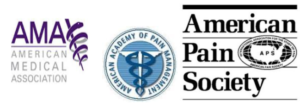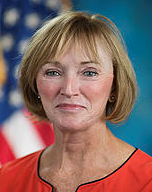Association of Attorneys General urges insurers to cover integrative pain strategies
September 26, 2017
 by John Weeks, Publisher/Editor of The Integrator Blog News and Reports On September 18, 2017, a new and critically important voice was heard in the nation’s effort to provide integrative pain strategies in the battle to end the ravages of opioid addiction. The voice was that of the National Association of Attorneys General (NAAG). As important was their industry organization target: America’s Health Insurance Plans (AHIP). In a joint letter signed by 37 attorneys general, NAAG requested that AHIP “take proactive steps to encourage your members to review their payment and coverage policies and revise them, as necessary and appropriate, to encourage healthcare providers to prioritize non-opioid pain management options over opioid prescriptions for the treatment of chronic, non-cancer pain.” PT, acupuncture, chiropractic and massage called out The NAAG letter first points to the lack of evidence for long-term use of opioids. Then follows the prescription: “When patients seek treatment for any of the myriad conditions that cause chronic pain, doctors should be encouraged to explore and prescribe effective non-opioid alternatives, ranging from non-opioid medications (such as NSAIDs) to physical therapy, acupuncture, massage, and chiropractic care.” The letter follows with a brief, rhetorical lesson on the insurers’ role in facilitating this shift. The therapeutic choices of doctors, like those of patients, typically flow toward what is covered: “Insurance companies thus are in a position to make a very positive impact in the way that providers treat patients with chronic pain.” NAAG urges the insurers to adopt a new incentive structure “that rewards the use of non-opioid pain management techniques.” They argue that “incentivizing opioid alternatives promotes evidence-based techniques that are more effective at mitigating this type of pain, and, over the long-run, more cost-efficient.” Linking state AGs and state insurance commissioners Neither the NAAG letter, nor the NAAG engagement with this issue, does not stop with this request from one national organization to another. Instead, NAAG puts AHIP on notice that the association for attorneys generals plans to work with its members in individual states to form collaborations with the insurance commissioners and other key stakeholders in a state-by-state effort. Their goals will be to “highlight problematic policies” and promote new policies to spur increased used of non-opioid approaches. They lay down the gauntlet: “The status quo, in which there may be financial incentives to prescribe opioids for pain which they are ill-suited to treat, is unacceptable.”
by John Weeks, Publisher/Editor of The Integrator Blog News and Reports On September 18, 2017, a new and critically important voice was heard in the nation’s effort to provide integrative pain strategies in the battle to end the ravages of opioid addiction. The voice was that of the National Association of Attorneys General (NAAG). As important was their industry organization target: America’s Health Insurance Plans (AHIP). In a joint letter signed by 37 attorneys general, NAAG requested that AHIP “take proactive steps to encourage your members to review their payment and coverage policies and revise them, as necessary and appropriate, to encourage healthcare providers to prioritize non-opioid pain management options over opioid prescriptions for the treatment of chronic, non-cancer pain.” PT, acupuncture, chiropractic and massage called out The NAAG letter first points to the lack of evidence for long-term use of opioids. Then follows the prescription: “When patients seek treatment for any of the myriad conditions that cause chronic pain, doctors should be encouraged to explore and prescribe effective non-opioid alternatives, ranging from non-opioid medications (such as NSAIDs) to physical therapy, acupuncture, massage, and chiropractic care.” The letter follows with a brief, rhetorical lesson on the insurers’ role in facilitating this shift. The therapeutic choices of doctors, like those of patients, typically flow toward what is covered: “Insurance companies thus are in a position to make a very positive impact in the way that providers treat patients with chronic pain.” NAAG urges the insurers to adopt a new incentive structure “that rewards the use of non-opioid pain management techniques.” They argue that “incentivizing opioid alternatives promotes evidence-based techniques that are more effective at mitigating this type of pain, and, over the long-run, more cost-efficient.” Linking state AGs and state insurance commissioners Neither the NAAG letter, nor the NAAG engagement with this issue, does not stop with this request from one national organization to another. Instead, NAAG puts AHIP on notice that the association for attorneys generals plans to work with its members in individual states to form collaborations with the insurance commissioners and other key stakeholders in a state-by-state effort. Their goals will be to “highlight problematic policies” and promote new policies to spur increased used of non-opioid approaches. They lay down the gauntlet: “The status quo, in which there may be financial incentives to prescribe opioids for pain which they are ill-suited to treat, is unacceptable.”  Comment: The big game, in all of health care, is who gets covered, for what, and for how much. A national shame in the USA’s $3.2-trillion industry is that, despite mounting evidence, few dollars are coughed up for non-opioid strategies for pain care. Evidence be damned. Insurers, and the subordinated practitioners who follow their restrictive reimbursement practices, are as guidance counselors to lemmings in this real-world scenario, leading patients to the precipice, and over. Game changer? We began to see institutional interest in breaking this pattern early in 2016. The AMA, American Pain Society, anesthesiologists and others responded to the CDC’s draft guidance on opioid prescribing with blunt statements success in combating opioid abuse rests on coverage changes. (See AMA, Other Leading Medical Organizations Urge Insurance for Non-Pharma/Integrative Pain Care.) Multiple state legislatures developed Medicaid pilot projects acupuncture and broader non-pharmacologic pain projects to shake loose the restrictive mantle of typical insurance coverage. Yet it is this letter from the NAAG—and particularly the plan to support policy action in individual states—that is directly and finally putting the insurers on notice that the time for change is now. Might this be the long-desired game changer? I have scratched my head over the years to try to figure from whence decisive action might come. I never once imagined it would be the state attorney generals.
Comment: The big game, in all of health care, is who gets covered, for what, and for how much. A national shame in the USA’s $3.2-trillion industry is that, despite mounting evidence, few dollars are coughed up for non-opioid strategies for pain care. Evidence be damned. Insurers, and the subordinated practitioners who follow their restrictive reimbursement practices, are as guidance counselors to lemmings in this real-world scenario, leading patients to the precipice, and over. Game changer? We began to see institutional interest in breaking this pattern early in 2016. The AMA, American Pain Society, anesthesiologists and others responded to the CDC’s draft guidance on opioid prescribing with blunt statements success in combating opioid abuse rests on coverage changes. (See AMA, Other Leading Medical Organizations Urge Insurance for Non-Pharma/Integrative Pain Care.) Multiple state legislatures developed Medicaid pilot projects acupuncture and broader non-pharmacologic pain projects to shake loose the restrictive mantle of typical insurance coverage. Yet it is this letter from the NAAG—and particularly the plan to support policy action in individual states—that is directly and finally putting the insurers on notice that the time for change is now. Might this be the long-desired game changer? I have scratched my head over the years to try to figure from whence decisive action might come. I never once imagined it would be the state attorney generals.  The letter from NAAG—a perfect aptonym—while targeting individual insurers, was addressed to AHIP’s president and CEO, Marilyn Tavenner, BSN, MHA. Tavenner was formerly the administrator of the Center for Medicare and Medicaid Services, where she succeeded Don Berwick, MD in guiding implementation of the Affordable Care Act. Tavenner’s prior work was with for-profit industry giant HCA. In a career that has classically rotated through the private-public revolving doors between big industry and big government, Tavenner has an opportunity here to come down strongly on the side of human beings. She needs to guide her members to proactively develop model coverage that doesn’t just extend to other drugs – their typical, safe-zone response. Tavenner needs to set her own task forces toward affirmatively and creatively developing strategies that cover not just the physical therapists, acupuncturists, massage therapists and chiropractors the NAAG calls out. The insurers should take a lead in extend toward mind-body care, yoga, Tai chi and any of the other therapies and practitioners who have made recent pain guidelines. The deaths and devastation from opioids together with the insurers’ certain awareness that their payment structures dis-incentivize non-pharmacologic approaches make it fair to sway that insurers have blood on their hands when it comes to the ravages of opioid. Tavenner has a chance to balance some karma here. By moving proactively with her membership, she can help steering the lemmings, and their practitioner facilitators, away from the cliffs of opioid dependence. Editor’s note: This article is not edited and the authors are solely responsible for the content. The views and opinions expressed in this article are those of the authors and do not necessarily reflect the official policy or position of Integrative Practitioner.
The letter from NAAG—a perfect aptonym—while targeting individual insurers, was addressed to AHIP’s president and CEO, Marilyn Tavenner, BSN, MHA. Tavenner was formerly the administrator of the Center for Medicare and Medicaid Services, where she succeeded Don Berwick, MD in guiding implementation of the Affordable Care Act. Tavenner’s prior work was with for-profit industry giant HCA. In a career that has classically rotated through the private-public revolving doors between big industry and big government, Tavenner has an opportunity here to come down strongly on the side of human beings. She needs to guide her members to proactively develop model coverage that doesn’t just extend to other drugs – their typical, safe-zone response. Tavenner needs to set her own task forces toward affirmatively and creatively developing strategies that cover not just the physical therapists, acupuncturists, massage therapists and chiropractors the NAAG calls out. The insurers should take a lead in extend toward mind-body care, yoga, Tai chi and any of the other therapies and practitioners who have made recent pain guidelines. The deaths and devastation from opioids together with the insurers’ certain awareness that their payment structures dis-incentivize non-pharmacologic approaches make it fair to sway that insurers have blood on their hands when it comes to the ravages of opioid. Tavenner has a chance to balance some karma here. By moving proactively with her membership, she can help steering the lemmings, and their practitioner facilitators, away from the cliffs of opioid dependence. Editor’s note: This article is not edited and the authors are solely responsible for the content. The views and opinions expressed in this article are those of the authors and do not necessarily reflect the official policy or position of Integrative Practitioner.



















SHARE